Lee Davy sits down with the photojournalist, Joe Giron, to talk about his life as a photojournalist within the poker circuit, his greatest shots, and his time on the road with Pantera.
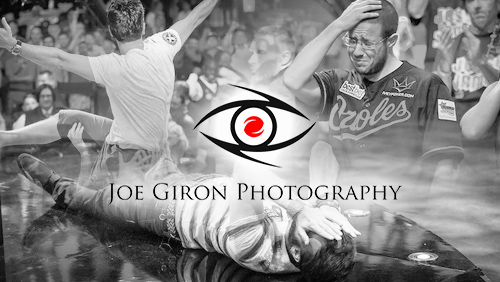 I was working at a live tournament, and the photographer had been axed to save money. The camera ended up in my lap. It made perfect business sense to me at the time.
I was working at a live tournament, and the photographer had been axed to save money. The camera ended up in my lap. It made perfect business sense to me at the time.
Any idiot can take a photograph of a poker player, right?
It turns out I was wrong, very wrong.
Photography is art.
It’s an expression of a creative genius that germinates in all of us but only flowers in people like Joe Giron, the man with four cameras slung over his shoulder sprinting around the Rio like a man possessed during the World Series of Poker.
How often do we marvel at the beautiful shots in poker that immortalise moments that would otherwise vanish from our memory like an etcha sketch in the hands of someone with a rather nervous disposition?
And who is responsible for encapsulating those magnificent moments?
People like, Joe Giron.
Can you give me the Joe Giron life story in less than 140 characters?
“Award-winning photojournalist specialises in poker & music. Former newspaper staffer, honest, hard-working, hates flakes, husband, dog lover.”
What was the first photograph you took?
“Received as a gift my first 35mm, single lens reflex camera at age 14. My first photo was more than likely of my dog Tiger.”
Close your eyes, what photograph do you see and why is it important to you?
“A photo I shot in August 1985 after a Delta Airlines plane crashed on final approach to DFW airport. As a newspaper photojournalist, you remember all the big news stories that you covered over the years, and this was my first, major airplane crash. This photograph was the lead image on the front page of the newspaper the next day.”
What is the most difficult part of poker photography?
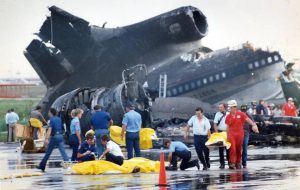 “I would have to say standing on your feet for long stretches of time, especially at final tables. Most early days in poker tournaments have set schedules, but getting to a winner at a final table can be unpredictable and finishes when it finishes.”
“I would have to say standing on your feet for long stretches of time, especially at final tables. Most early days in poker tournaments have set schedules, but getting to a winner at a final table can be unpredictable and finishes when it finishes.”
How do you think the industry treats poker photographers?
“I can only speak from my experiences, but I believe the industry has treated me well. I think much of that comes from the respect that the quality of my work has generated. I came into poker photography as an established, photographic professional and not some wannabe poker player that owns a camera.”

What would you change about the way imagery is used in poker?
“The only issue I have with the way imagery is used in poker is when website developers design a website that has predominantly landscape orientation photography. I believe poker is a game that is best photographed in portrait orientation for the most part.”
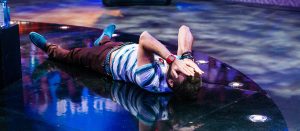
What are some of your most memorable shots in poker?
“One is obviously the photo that won me this year’s GPI American Poker Award for Media Content of the Year. It’s the image of Daniel Negreanu busting out of the 2015 WSOP Main Event in 11th. place. He fell to the ground after being eliminated. Another memorable image is the one of Greg Merson breaking down emotionally after winning the 2012 WSOP Main Event. And finally, Antonio Esfandiari after winning the inaugural Big One for One Drop Million Dollar buy-in tournament.”
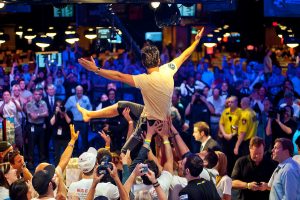 On a broader scale, how difficult is it to earn a living in your business?
On a broader scale, how difficult is it to earn a living in your business?
“For me, the poker industry has been a very profitable niche in which to be in. As I stated above, I was already a well-established professional freelance photographer when I started in poker in 2005. I know the value of my work and talent and know how to negotiate with clients to make sure my expertise is being compensated in an appropriate manner. Also knowing the value of your work helps to be able to charge the appropriate licensing fees when clients come to you wanting to use my work. Too many times, I see colleagues settle for wages that are akin to minimum wage or give their work away for free just to say that they have been published.”
Has there ever been a moment when you decided it was all too much, and you needed a different career, if so, can you describe the moment?
“Never. I knew I wanted to be a professional photojournalist at the age of 16. As I have said many times, I don’t feel as if I have worked a day in my life because this is exactly what I wanted to do career-wise.”
Describe your new book?
“On September 13, 2016, a book of my photography will be released. It is a coffee table-style book that documents the photographic history of the heavy metal/hard rock band, Pantera. I met the band during my days as a newspaper staff photographer in the Dallas-Fort Worth, Texas area. We stuck up a professional and personal relationship that continues to this day. The band disbanded in 2001, but I captured most of their history visually from 1985-2001.”
Here is a link to my publisher’s website that features information about the book
What is your one abiding moment from your time with them?
“I was recently asked this questions by a radio interviewer. I would have to say there wasn’t one moment, but several. Being able to tour with the band gave me many opportunities to witness their amazing musicianship and showmanship. The tightness, virtuosity and connection that the band member’s shared together created an amazing audio-visual experience I have never, ever seen a band perform live that equaled the brutality of a Pantera show.”
What is your favourite photograph?
“I have so many favourite photographs of the band, but this session sticks out for how much fun we had shooting it. Dimebag’s guitar manufacturer, Washburn, created a “signature” line of guitars for him. One of the models was called the “Dime Slime.” I flew to Dallas, TX, to do some work with the band for a CD packaging shoot and at the same time, Dime and I decided to do some advertising photography for his line of guitars. For the “Dime Slime” we cut a hole in the middle of a “kiddie” pool, lined it sheets of black plastic, mixed up a paper-mache type of concoction that included green food coloring and then put Dimebag in the middle of all of this. We were laughing so hard it was tough getting Dimebag to look serious and tough for the images.”
What are you looking for when you take the camera out of your bag and point it in a particular direction?
“I am looking to tell a story anytime I point my camera in a particular direction. That is the main duty of a photojournalist. Convey as much information in the image to inform the person viewing.”
Image Credit: jgparchive.photoshelter.com/
hotojournalist. Convey as much information in the image to inform the person viewing.”
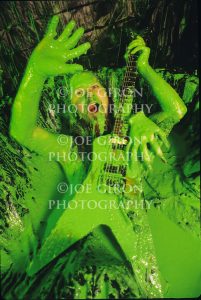
If I gave you 10,000 to do anything what would you choose to do and why?
”
If I had 10K hours at my disposal, I would take that time and finish scanning the rest of my music slide archive collection. I have gotten through the letter “J” and I need to finish the rest. It is a very laborious process editing, scanning and processing 35mm slides. Being on the road photographing tournaments throughout the year keeps me very busy, and once I do get back into the office, all I want to do is relax and enjoy spending time with my wife and two dogs. The slide scanning takes a back seat.”
Give my 15-year old teenage son some advice about life.
“Treat people with respect no matter how much they might disrespect you. I’m a big believer in karma, and I find that the way you act towards others plays a big role in what comes back your way.”
To see more of Joe’s work you can visit these websites: